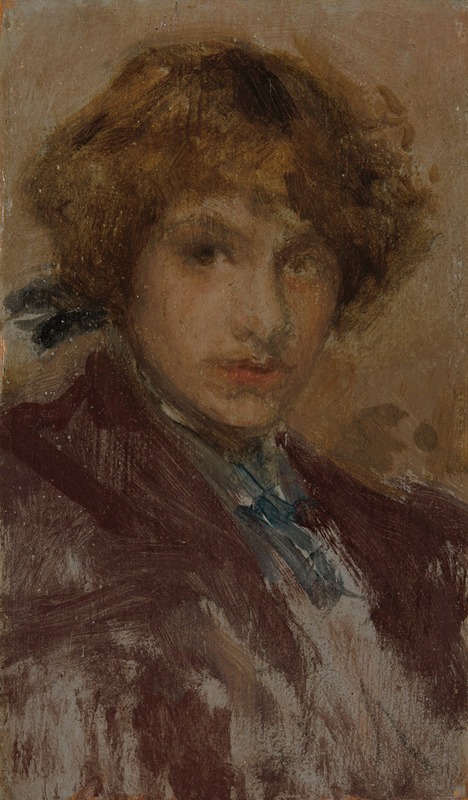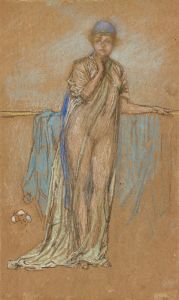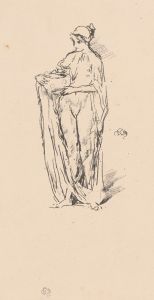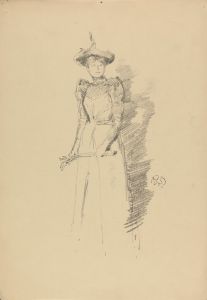
Study of a Girl’s Head and Shoulders
A hand-painted replica of James Abbott McNeill Whistler’s masterpiece Study of a Girl’s Head and Shoulders, meticulously crafted by professional artists to capture the true essence of the original. Each piece is created with museum-quality canvas and rare mineral pigments, carefully painted by experienced artists with delicate brushstrokes and rich, layered colors to perfectly recreate the texture of the original artwork. Unlike machine-printed reproductions, this hand-painted version brings the painting to life, infused with the artist’s emotions and skill in every stroke. Whether for personal collection or home decoration, it instantly elevates the artistic atmosphere of any space.
"Study of a Girl’s Head and Shoulders" is a work by the renowned American artist James Abbott McNeill Whistler, who was active during the late 19th and early 20th centuries. Whistler is best known for his contributions to the Aesthetic Movement, which emphasized art for art's sake, focusing on beauty and visual harmony rather than narrative content or moral messages. His works often feature a delicate interplay of color and form, and he is celebrated for his portraits and atmospheric landscapes.
This particular study is a testament to Whistler's skill in capturing the subtleties of human expression and form. As the title suggests, the piece focuses on the head and shoulders of a young girl, rendered with Whistler's characteristic sensitivity to line and tone. The study likely served as a preparatory work, a common practice for artists seeking to explore composition, light, and form before committing to a larger, more detailed piece.
Whistler's approach to portraiture often involved a limited color palette and a focus on the sitter's expression and mood rather than elaborate backgrounds or settings. This aligns with his broader artistic philosophy, which prioritized the aesthetic experience over detailed realism. In "Study of a Girl’s Head and Shoulders," Whistler's use of soft, muted tones and gentle brushwork creates a sense of intimacy and immediacy, inviting viewers to engage with the subject on a personal level.
The study reflects Whistler's interest in the interplay between light and shadow, a hallmark of his portrait work. His ability to convey depth and volume through subtle gradations of tone is evident in the delicate rendering of the girl's features. This technique not only highlights Whistler's technical prowess but also his ability to evoke emotion and character through minimalist means.
Whistler's portraits, including studies like this one, were often influenced by his interactions with other artists and movements of his time. He was known to draw inspiration from the works of the Old Masters, as well as contemporary trends in European art. His time spent in Paris and London exposed him to a variety of artistic styles and philosophies, which he skillfully integrated into his own unique approach.
While specific details about the model for "Study of a Girl’s Head and Shoulders" are not widely documented, it is not uncommon for Whistler's studies to feature friends, family members, or professional models. The anonymity of the subject in this study allows the focus to remain on the artistic qualities of the work itself, rather than on the identity of the sitter.
Overall, "Study of a Girl’s Head and Shoulders" exemplifies Whistler's mastery of portraiture and his commitment to the principles of the Aesthetic Movement. Through his nuanced use of color, light, and form, Whistler creates a work that is both visually compelling and emotionally resonant, capturing the essence of his subject with remarkable economy and grace.


















